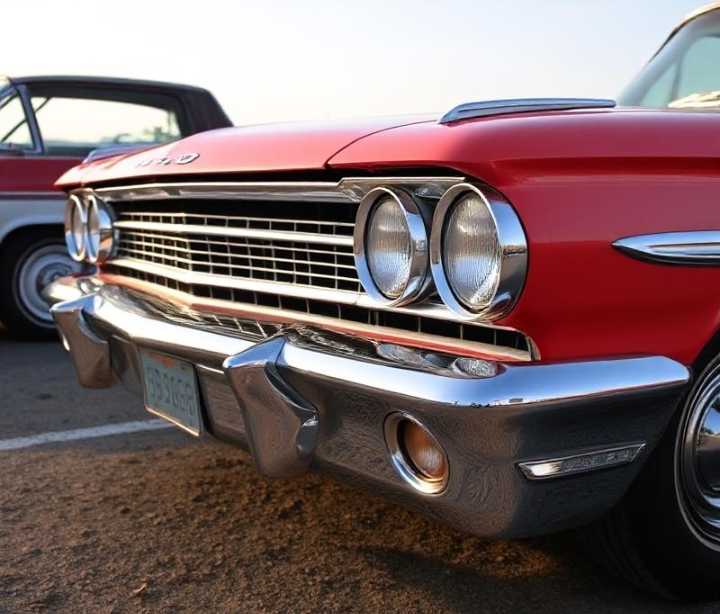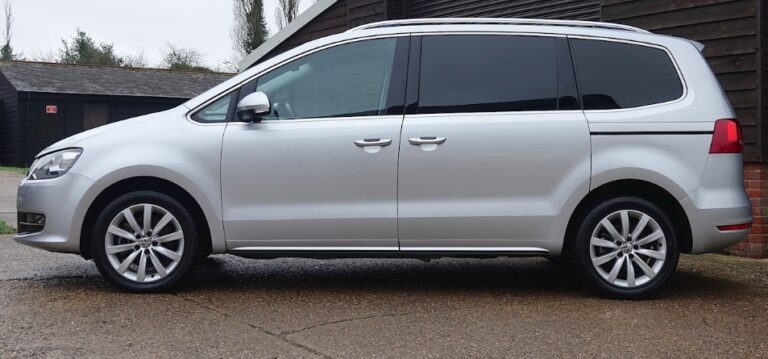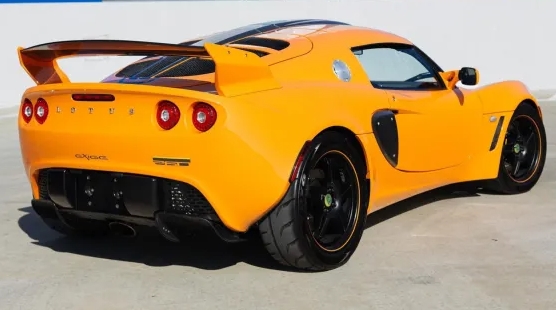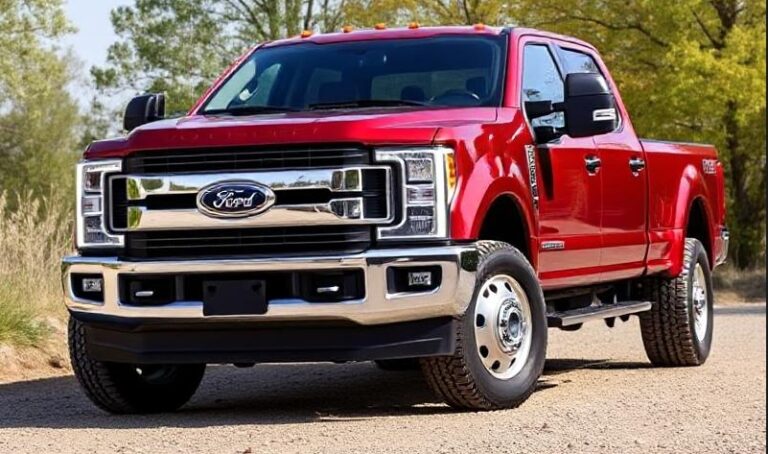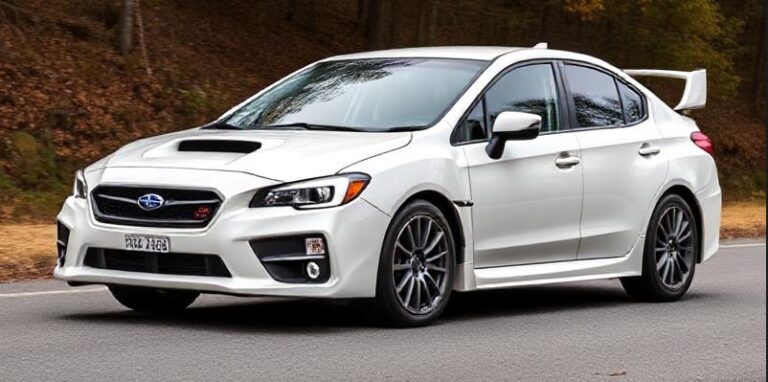The Rise and Fall of Practicality: The Evolution of the Ford C-Max and B-Max
In the annals of automotive history, few segments have experienced such a meteoric rise and subsequent decline as the Multi-Purpose Vehicle (MPV). For a time, these high-roofed, family-focused vehicles were the default choice for those needing more space than a traditional hatchback or estate could offer. At the forefront of this movement in Europe was Ford, which, with its C-Max and B-Max models, sought to prove that practicality and driver enjoyment were not mutually exclusive concepts. This is the story of their evolution, from a single innovative model to a diverse family of people carriers, and their eventual replacement by the all-conquering SUV.
Part I: The C-Max Saga – A Focus on Family
The Progenitor: The Ford Focus C-Max (2003-2010)
The C-Max story begins not as a standalone model, but as a direct extension of one of Ford’s most successful products. Launched in 2003, the Ford Focus C-Max was built on the brand-new C1 platform, which would go on to underpin the critically acclaimed second-generation Ford Focus a year later. This shared DNA was the car’s secret weapon. While rivals like the Renault Scénic and Vauxhall/Opel Zafira often felt utilitarian, the Focus C-Max inherited the Focus’s sophisticated “Control Blade” independent rear suspension, giving it a level of handling poise and ride comfort that was unheard of in the compact MPV class.
Initially, it was a strict five-seater, eschewing the trend of cramming a third row of seats into a compact footprint. Ford’s rationale was to offer superior space and comfort for five occupants rather than compromised space for seven. The interior was a model of flexibility, featuring a rear seating arrangement where the middle seat could fold away, allowing the two outer seats to slide diagonally inwards and backwards, creating limousine-like legroom for two rear passengers.
The initial trim levels followed a familiar Ford hierarchy, designed to cater to a broad spectrum of buyers:
- Studio: The entry-level, no-frills model, typically featuring steel wheels and basic amenities.
- Style: Added creature comforts like air conditioning and body-coloured trim pieces.
- Zetec: The volume seller, offering a sportier feel with alloy wheels, front fog lights, and a more premium interior trim.
- Ghia: The luxury-oriented flagship, boasting features like cruise control, automatic headlights and wipers, and often velour upholstery and wood-effect trim.
In 2007, the model received a significant mid-life facelift. More than just a cosmetic update, this marked a crucial step in its evolution. The car was rebranded, dropping the “Focus” prefix to become simply the Ford C-Max. This change coincided with the adoption of Ford’s new “Kinetic Design” philosophy, giving it the sharp, trapezoidal front grille and angular headlights seen across the contemporary Ford range. The interior was also refreshed with higher-quality materials and an updated dashboard layout. The trim structure was revised, with the luxurious Titanium trim eventually succeeding the traditional Ghia as the top-of-the-range model, bringing a more modern, tech-focused appeal with features like the Sony audio system and larger alloy wheels.
.
NO MORE dead batteries with this:

.
A Family Divided: The Second Generation (2010-2019)
For its second generation, launched in 2010, Ford made a bold and brilliant decision. Recognizing that the “one-size-fits-all” approach was limiting, they split the C-Max into two distinct models, both built on the new Global C platform shared with the third-generation Focus.
- The C-Max: This was the direct successor to the original—a sporty, five-seat compact MPV. It was sleeker and more stylish than its predecessor, with a dynamic design that hid its practicality well. It was aimed at smaller families who needed flexibility without the footprint of a larger vehicle.
- The Grand C-Max: This was Ford’s long-awaited answer to the seven-seat compact MPV segment. Built on a longer wheelbase (by 140mm), it not only incorporated a third row of two foldable seats but also featured a game-changing addition: twin sliding rear doors. This made accessing the rear seats in tight parking spaces incredibly easy and was a huge selling point for families with young children. The Grand C-Max also had a boxier, more functional roofline to maximize headroom for third-row occupants.
This generation also saw the introduction of Ford’s revolutionary EcoBoost engine technology. The 1.0-litre three-cylinder and 1.6-litre four-cylinder turbocharged petrol engines offered the power of larger naturally aspirated units but with significantly better fuel economy and lower emissions. These were offered alongside a range of refined and powerful Duratorq TDCi diesel engines.
The trim level hierarchy was streamlined and modernized for this new era:
- Zetec: Remained the well-equipped entry point, featuring 16-inch alloy wheels, air conditioning, a heated windscreen, and Bluetooth connectivity.
- Titanium: The definitive mid-to-high range model. It added larger 17-inch alloys, dual-zone climate control, keyless start, cruise control, and automatic headlights and wipers.
- Titanium X: The pinnacle of the range, this trim packed in luxury features such as a panoramic glass roof, partial leather seats (often heated in the front), bi-xenon headlights, and an upgraded sound system.
A major facelift arrived in 2015, bringing the C-Max and Grand C-Max in line with the rest of the Ford family by adopting the prominent, Aston Martin-esque trapezoidal grille. The interior received a significant overhaul, with a cleaner dashboard design, higher-grade soft-touch materials, and the introduction of Ford’s SYNC 2 touchscreen infotainment system. Engine technology was further improved for efficiency, and driver assistance systems like Active Park Assist were made more widely available.
Part II: The Innovative Sibling – The Ford B-Max (2012-2017)
While the C-Max battled in the compact segment, Ford identified a gap in the market below it. The result was the Ford B-Max, a subcompact MPV based on the Fiesta’s global B-car platform, launched in 2012. It was designed to be the ultimate urban family vehicle, combining a tiny footprint with cavernous interior access.
The B-Max’s defining feature, and its main contribution to automotive design, was the Ford Easy Access Door System. This was a truly innovative piece of engineering. The car had no fixed central B-pillar. Instead, the structural integrity of a traditional B-pillar was integrated directly into the reinforced front and sliding rear doors. When both doors on one side were open, they revealed a stunningly wide, 1.5-metre uninterrupted aperture. This made loading bulky items, or fitting a child seat in a cramped parking bay, easier than in any other car in its class.
Despite its small exterior dimensions, the B-Max offered remarkable interior space, with a high roofline and clever packaging. It was powered primarily by the multi-award-winning 1.0-litre EcoBoost engine, a perfect match for the car’s city-dwelling ethos, though other petrol and diesel options were also available.
The trim levels for the B-Max largely mirrored those of its bigger brother, ensuring a familiar customer journey:
- Studio: The most basic model, rarely seen and sparsely equipped.
- Zetec: The core model that most customers chose, offering air conditioning, alloy wheels, and Ford’s SYNC voice-activated connectivity system.
- Titanium: Added more sophisticated features like larger alloys, cruise control, automatic climate control, and the Sony audio system.
- Titanium X: The range-topper, including a full leather interior, heated front seats, a panoramic glass roof, and keyless entry, making for a very luxurious small car.
The End of an Era: The Market Shift
For all their innovation, practicality, and driver appeal, the C-Max and B-Max were fighting a losing battle against a seismic shift in consumer preference. The automotive world was falling in love with the SUV.
The Ford B-Max was the first casualty. Its brilliant door system was a clever solution, but it was expensive to engineer, and buyers were increasingly flocking to small crossovers like the Ford EcoSport and Renault Captur, which offered a similar high driving position but with more fashionable, rugged styling. The B-Max was quietly discontinued in 2017.
The C-Max and Grand C-Max held on for a little longer, but their sales were being cannibalised from all sides. Buyers wanting a stylish, high-riding family car were now choosing the Ford Kuga SUV. By the late 2010s, the compact MPV segment was a shadow of its former self. In 2019, Ford announced the cessation of C-Max and Grand C-Max production at its Saarlouis plant in Germany, marking the end of Ford’s 16-year journey in the European MPV market.
Legacy
The evolution of the Ford C-Max and B-Max is a perfect microcosm of the European family car market in the 21st century. The C-Max began life by injecting a much-needed dose of driving pleasure into a staid segment, later evolving into a versatile two-model family that catered to diverse needs. The B-Max was a bold, innovative gamble on ultimate urban accessibility.
Though they are no longer in production, their legacy endures. They proved that family cars didn’t have to be dull to drive, that clever design could solve everyday problems, and that Ford, at its best, could build class-leading vehicles for the real world. While the roads are now dominated by their SUV successors, the C-Max and B-Max remain a testament to a time when the MPV was king, and practicality reigned supreme.


